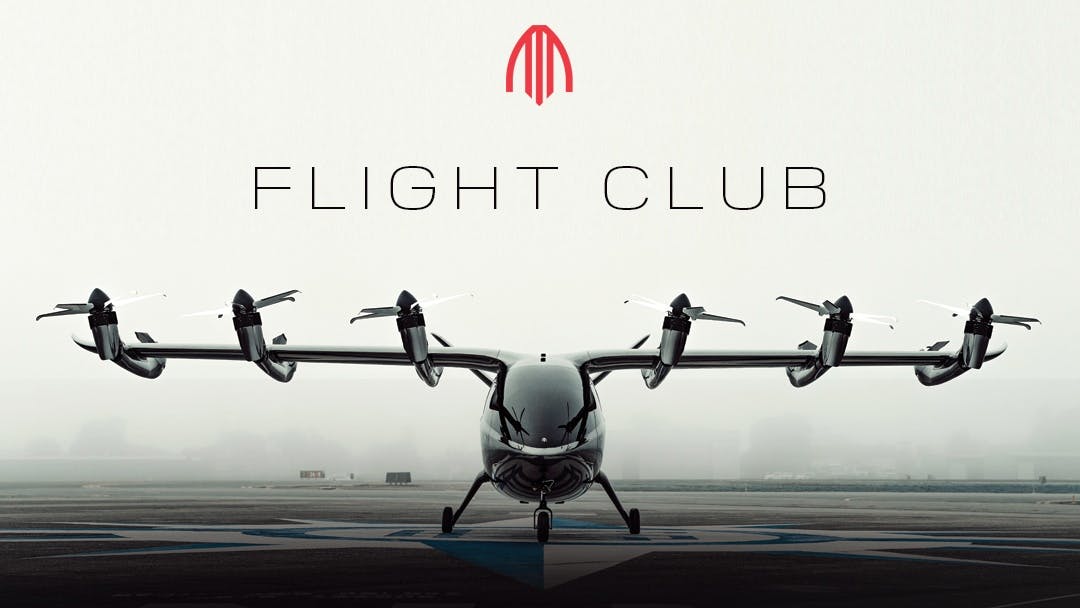
The skies are calling. The opportunity to explore further, to discover more, continues. Witnessing the first hover test flight of Maker, our full scale demonstrator eVTOL aircraft, was momentous. Though a single step in our journey, it propelled us nearer to the future of Urban Air Mobility (UAM). There lie many more steps ahead, and many more questions to answer. From those intrigued by what the future may hold, eager to discover more about eVTOL flight, Flight Club continues. Here now are the latest selection of questions, answered by the Archers in the know. Welcome to Flight Club, Round 2.
Q: How are the test flights coming along? - leoninee, Instagram
A: Safety is our number one goal when it comes to flight testing at Archer. We are taking a traditional flight test approach to exploring the performance and characteristics of our aircraft called envelope expansion. Our plan consists of flights that are first explored in hover before steadily increasing airspeed over many flights to our final cruise speed. Rather than attempting to transition from hover to cruise in one go, we are taking the time to conduct extensive data reviews with flight data at several intermediate speeds. In December, our Maker aircraft had our first hover flight which marked a really important milestone for the program. We’ll continue to update the public across the course of the year. - Matt Deal, Flight Test Manager
Q: What does the energy use look like comparing vertical and horizontal flight? - ryan_cuziwastoldto, Instagram
A: The power required to hover is roughly 3 to 4x higher than in cruise. In cruise, we benefit from having an efficient high-aspect ratio wing that reduces the power required substantially vs. hover flight. - Dr. Geoffrey Bower, Chief Engineer
Q: What is your payload range? - lochieferrier, Instagram
A: We are designing our production aircraft for a payload of 1 pilot and 4 passengers and a targeted mission range of 20-50 miles. While the aircraft may be able to handle much higher ranges, we believe the maximum amount of demand exists in these 20-50 mile routes within urban areas. Electric aircraft are unique in that it isn’t easy to trade fuel (i.e., batteries) for payload while maintaining maximum takeoff weight (MTOW) as in a large commercial aircraft. - Dr. Geoffrey Bower, Chief Engineer
Q: Why aren't the rotors exactly horizontal when they're in maximum lift position? - Marcelo L., LinkedIn
A: We angle (cant) the propellers for a couple of reasons. First, we do this for safety reasons. The propeller tip path planes are oriented so that they don’t intersect each other or the fuselage to reduce the probability of a cascading failure due to something like a bird strike on a propeller. The second reason we cant the propellers is to increase the amount of yaw control authority that each motor can generate. This is traditionally the most difficult axis to command for multirotors. We pay a very minor penalty in vertical thrust (it’s a cosine effect), for a substantial increase in yaw authority. - Dr. Geoffrey Bower, Chief Engineer
Q: How does the propulsion adjust from vertical takeoff to forward thrust? - mr_tp22, Instagram
A: We have dedicated actuators that tilt the forward propulsion units from their vertical takeoff position to their cruise position through the transition phase. These actuators are commanded by our flight control system along with the motor rotations per minute (RPMs), forward propeller blade pitch angles, and control surface positions based on the current speed and state of the aircraft. - Dr. Geoffrey Bower, Chief Engineer
Q: What kind of pilot's license do you imagine your aircraft will require to fly? - clarokc_, Instagram
A: At entry into service, we do not expect FAA requirements will have changed from what exists today. Therefore, our aircraft will require a commercial pilots rating to conduct passenger carrying operations. As eVTOL aircraft become more widely used and the “Simplified Vehicle Operations” concept advances we would expect the pilot requirements to also change. - Jeff Greenwood, Chief Test Pilot and Head of Flight Safety
Read more responses from Flight Club:

